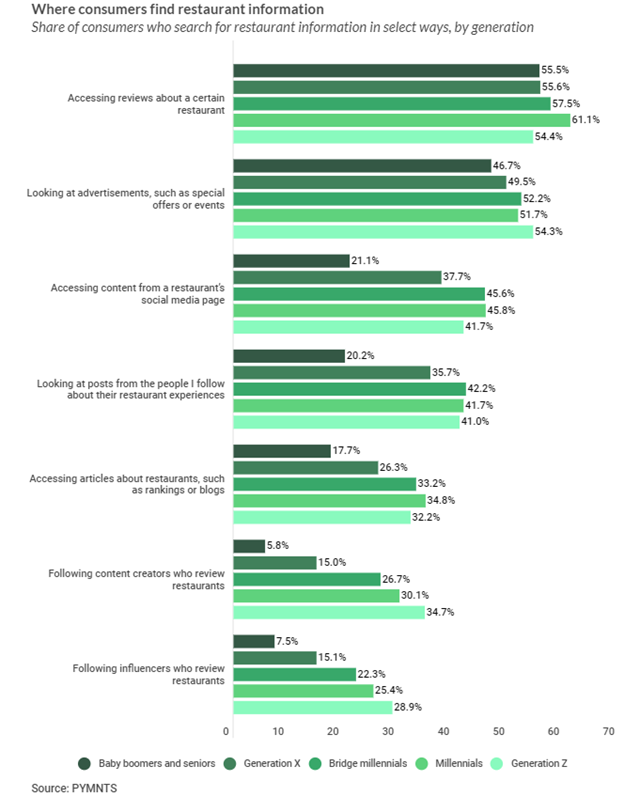In today’s digital age, consumers have access to a wealth of information that helps them make informed decisions, especially when choosing a restaurant. In this context, online reviews and social media platforms have become vital for diners to share their experiences and gather information.
In “Connected Dining: Word of Mouth in the Digital Age,” PYMNTS Intelligence draws insights from a survey of nearly 2,300 consumers to examine how they use digital platforms and other tools to guide their restaurant journeys as well as how restaurants can leverage social media, search engines and other forms of word of mouth to build their brands in the digital economy.
According to the research study, positive online reviews significantly influence consumers’ dining choices, with nearly half of restaurant-goers more likely to order from restaurants after reading positive reviews. Conversely, negative reviews influence 29% of diners to be less likely to order from a particular restaurant.
The data shows that millennials and bridge millennials are highly influenced by online reviews when choosing where to dine and what to order. Moreover, they are also active contributors, with 74% of millennials and 71% of bridge millennials stating their likelihood to leave reviews based on their dining experiences.
Gen Z consumers, on the other hand, rely more on content creators and influencers for restaurant information. Social media platforms play a crucial role in this regard, with 37% of consumers looking at content shown on restaurants’ social media pages. Platforms like YouTube, Instagram and TikTok are particularly popular among Gen Z consumers for gathering restaurant information.
Overall, Google is the go-to resource for restaurant reviews and all dining-related information, with 56% of consumers using Google to search for restaurant information in the 30 days before the survey. Social media platforms also play a significant role, with 64% of consumers using at least one social media platform to search for restaurant information. Millennials and bridge millennials tend to gravitate toward Google and Facebook, while Gen Z consumers prefer YouTube, Instagram and TikTok.
While good food, high-quality service, and positive customer experiences remain crucial, restaurants must take a multi-pronged approach to customer engagement. This includes proactively encouraging customers to leave online reviews and leveraging social media platforms to enhance their online presence.

Source : Pymnts

























